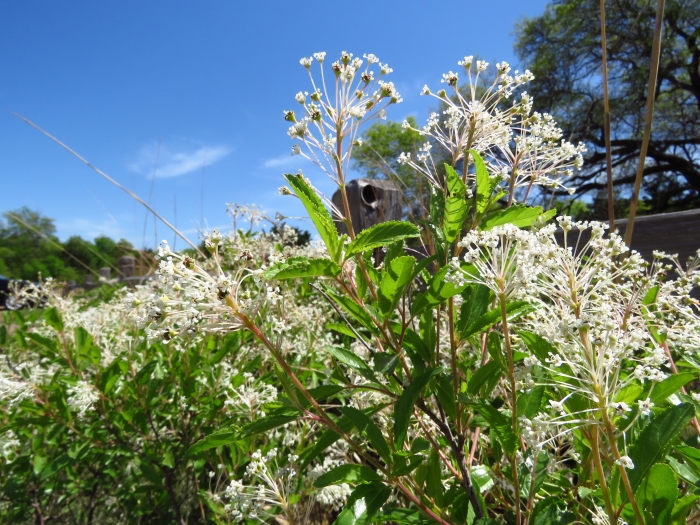Jersey Tea
(Ceanothus herbaceus)
Jersey Tea (Ceanothus herbaceus)
/
/

Annika Lindqvist
CC BY 4.0
Image By:
Annika Lindqvist
Recorded By:
Copyright:
CC BY 4.0
Copyright Notice:
Photo by: Annika Lindqvist | License Type: CC BY 4.0 | License URL: http://creativecommons.org/licenses/by/4.0/ | Rights Holder: Annika Lindqvist | Publisher: iNaturalist | Date Created: 2021-04-08T14:28:26-07:00 |




















































Estimated Native Range
Summary
Ceanothus herbaceus, commonly known as Jersey Tea, is a deciduous shrub native to North American prairies, glades, and open woodlands, particularly in the Central and Eastern USA, as well as Manitoba and Northeastern Mexico. It typically grows to a height of 2-3 feet (0.6-0.9 meters) and a similar width, with a hemispheric form and branches that vary from ascending to spreading. The small, fragrant, white flowers bloom in dense, rounded clusters approximately 0.5 to 0.75 inches wide from late spring to early summer, attracting pollinators. The fruit, a dry capsule 3-4.5 mm wide, provides food for birds such as bobwhite quail and is a host for the azure blue butterfly.
Jersey Tea is valued for its drought tolerance and deep root system, which can extend up to 15 feet, making it an excellent choice for erosion control and xeriscaping. Its ability to resprout vigorously after fire makes it a resilient addition to native plant gardens and restoration projects. It thrives in full sun and well-drained soils, requiring low to medium amounts of water once established. This shrub is often used in border plantings, native plant gardens, and as a low-maintenance alternative to non-native ornamentals. While it is generally disease-resistant, powdery mildew can occasionally be a problem in humid climates.CC BY-SA 4.0
Jersey Tea is valued for its drought tolerance and deep root system, which can extend up to 15 feet, making it an excellent choice for erosion control and xeriscaping. Its ability to resprout vigorously after fire makes it a resilient addition to native plant gardens and restoration projects. It thrives in full sun and well-drained soils, requiring low to medium amounts of water once established. This shrub is often used in border plantings, native plant gardens, and as a low-maintenance alternative to non-native ornamentals. While it is generally disease-resistant, powdery mildew can occasionally be a problem in humid climates.CC BY-SA 4.0
Plant Description
- Plant Type: Shrub
- Height: 2-3 feet
- Width: 1-2 feet
- Growth Rate: Slow
- Flower Color: White
- Flowering Season: Spring, Summer
- Leaf Retention: Deciduous
Growth Requirements
- Sun: Full Sun, Part Shade
- Water: Low
- Drainage: Medium
Common Uses
Bank Stabilization, Bee Garden, Bird Garden, Butterfly Garden, Deer Resistant, Drought Tolerant, Fragrant, Groundcover, Hummingbird Garden, Low Maintenance, Showy Flowers
Natural Habitat
North American prairies, glades, and open woodlands
Other Names
Common Names: Prairie Redroot, Small Redroot, Inland Ceanothus, Fuzzy Ceanothus, Céanothe À Feuilles Étroites
Scientific Names: , Ceanothus herbaceus, Ceanothus ovatus, Ceanothus herbaceus var. pubescens, Ceanothus ovatus var. pubescens, Ceanothus fontanesianus, Ceanothus ovalis, Ceanothus pubescens, Ceanothus baumannianus, Ceanothus grandiflorus
GBIF Accepted Name: Ceanothus herbaceus Raf.